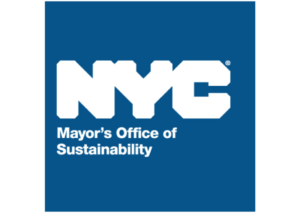Cook County – Kate Buczek – 2016
Goals
Cook County, the second most populated county in the United States, is home to over 5 million residents, nearly 22,000 employees, just under 2,000 vehicles, and over 250 buildings. As an emerging leader in local public sector energy with set GHG emissions targets, the County recognized the need for a Carbon Reduction Strategy to direct operations. EDF Climate Corps fellow Kate Buczek was brought in to evaluate county-wide emissions and create a strategy for reducing emissions 80% by 2050 across the building portfolio, transportation, waste, and water sectors.
Solutions
Kate held initial discussions with facilities, energy, water, green fleet, and sustainability committees to better understand inner government operations and County requirements. Based off these conversations, she directed her data analysis around strategizing policy and County goals for carbon reduction measures and centralizing data tracking into a GHG Model to account for annual emissions reductions moving forward.
This focused analysis, in addition to collaboration with the newly created Carbon Reduction Committee, enabled Kate to create a 2016 all-encompassing GHG inventory baseline for County building portfolio energy use, fleet and commuting, waste, water, and preliminary solar potential. Building portfolio and transportation energy proved to be the highest emission sectors, and therefore the best opportunities for devising more specific interim strategies and pilots needed to meet reduction goals.
Kate then measured her project suggestions using a carbon effectiveness scale. These were included in both the strategic plan’s “next steps” to ensure interim reduction goals are met by 2035 and 2050, as well as in the GHG modelling tool to continue emissions tracking. Some of the solutions outlined for Cook County to meet the 80% reduction goal include:
1. Energy Management System programming rollout for the full facilities portfolio
2. Fleet Management software to target specific areas for decommissioning and alternative vehicle adoption
3. Updating commuting data annually to improve employee transportation opportunities
4. Going after LEED Gold Certification for the 5 buildings with qualifying Energy Portfolio Management Scores
5. Continuing energy efficiency project investment to approximately 35% of buildings
Potential Impact
By implementing Kate’s recommendations, the County’s annual emission could be reduced by close to 300,000 CO2 by the year 2050.
- Sustainability and Energy Management Strategy








